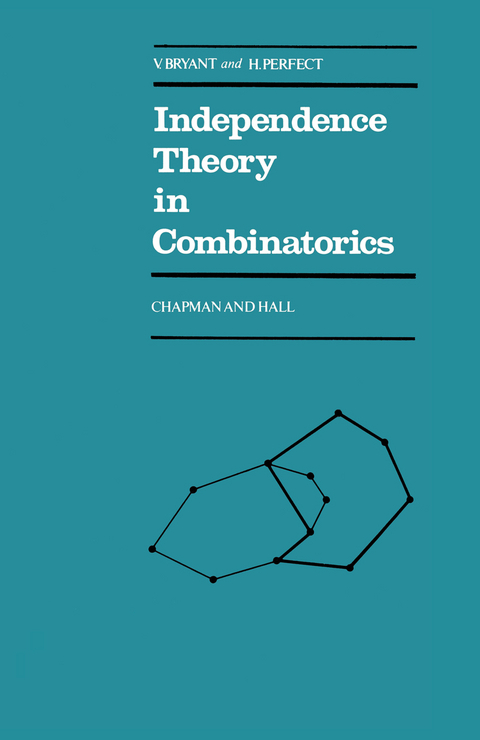
Independence Theory in Combinatorics
Chapman and Hall (Verlag)
978-0-412-22430-0 (ISBN)
1 Preliminaries.- 1.1 General introductory and historical remarks.- 1.2 Sets, families and graphs.- 1.3 Vector spaces; linear and affine independence.- Exercises.- 2 Independence spaces.- 2.1 Axioms and some basic theorems.- 2.2 Some induced structures.- 2.3 Submodular functions.- 2.4 Sums of independence structures.- Exercises.- 3 Graphic spaces.- 3.1 The cycle and cutset structures of a graph.- 3.2 Connections with vector spaces.- 3.3 Applications of independence theory to graphs.- Exercises.- 4 Transversal spaces.- 4.1 Hall’s theorem and its generalization.- 4.2 The partial transversals of a family of sets.- 4.3 Duals of transversal structures.- 4.4 Extensions of Hall’s theorem.- 4.5 Applications.- Exercises.- 5 Appendix on representability.- 5.1 Representability in general.- 5.2 Linear representability.- 5.3 Induced structures.- 5.4 Linear representability over specified fields.- 5.5 Some spaces which are not linearly representable.- Exercises.- Hints and solutions to the exercises.- Further reading.
| Erscheint lt. Verlag | 2.10.1980 |
|---|---|
| Zusatzinfo | XII, 144 p. |
| Verlagsort | London |
| Sprache | englisch |
| Maße | 140 x 216 mm |
| Themenwelt | Mathematik / Informatik ► Mathematik ► Graphentheorie |
| Naturwissenschaften | |
| Sozialwissenschaften | |
| ISBN-10 | 0-412-22430-5 / 0412224305 |
| ISBN-13 | 978-0-412-22430-0 / 9780412224300 |
| Zustand | Neuware |
| Informationen gemäß Produktsicherheitsverordnung (GPSR) | |
| Haben Sie eine Frage zum Produkt? |